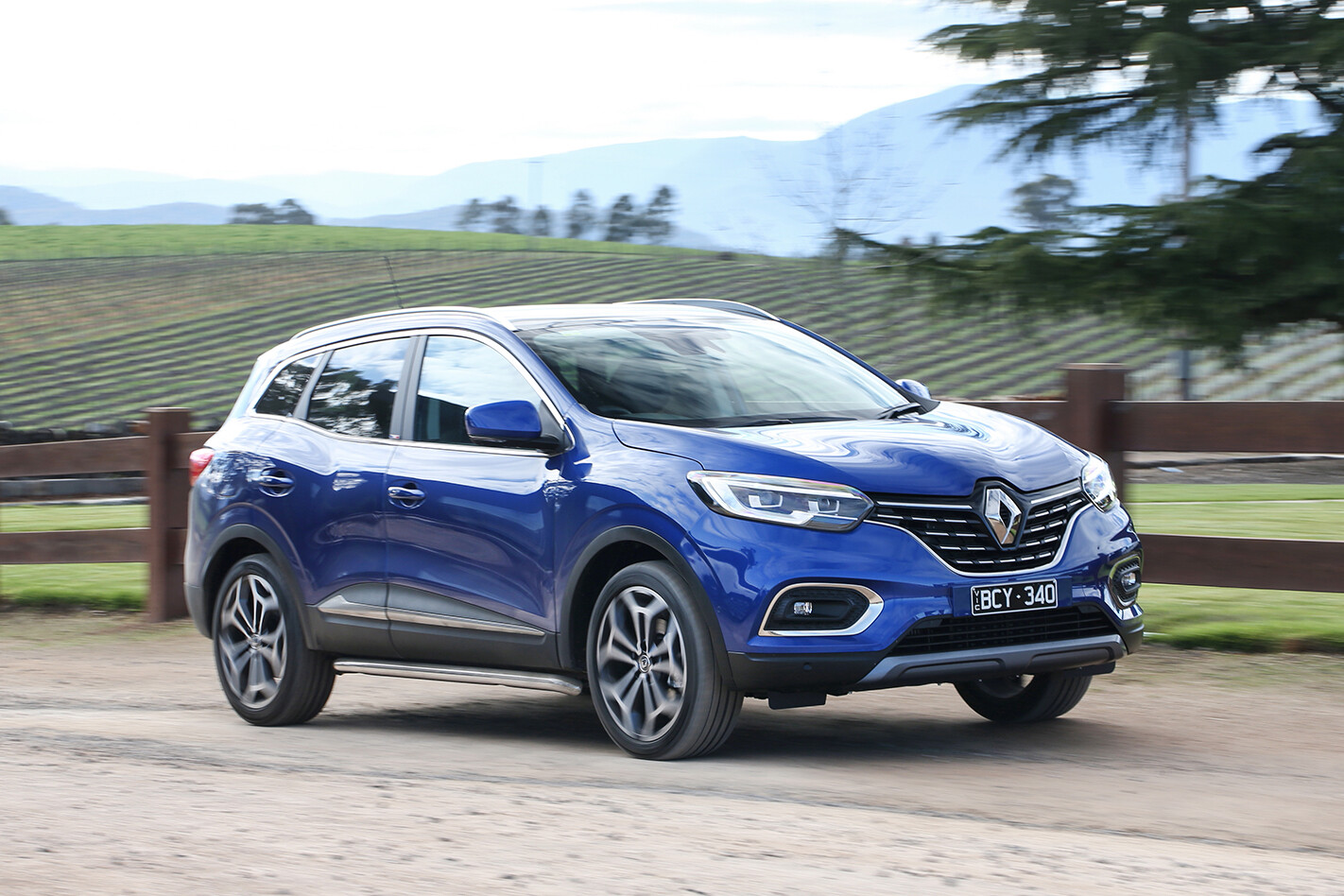
Things we like
- Smooth ride
- Premium features
- Spacious interior
Not so much
- Loose road holding
- Small touchscreen display
What is it?
The Kadjar is the latest Renault SUV to enter the Australian market and it bridges the gap between the French car maker’s Captur crossover and mid-sized Koleos.
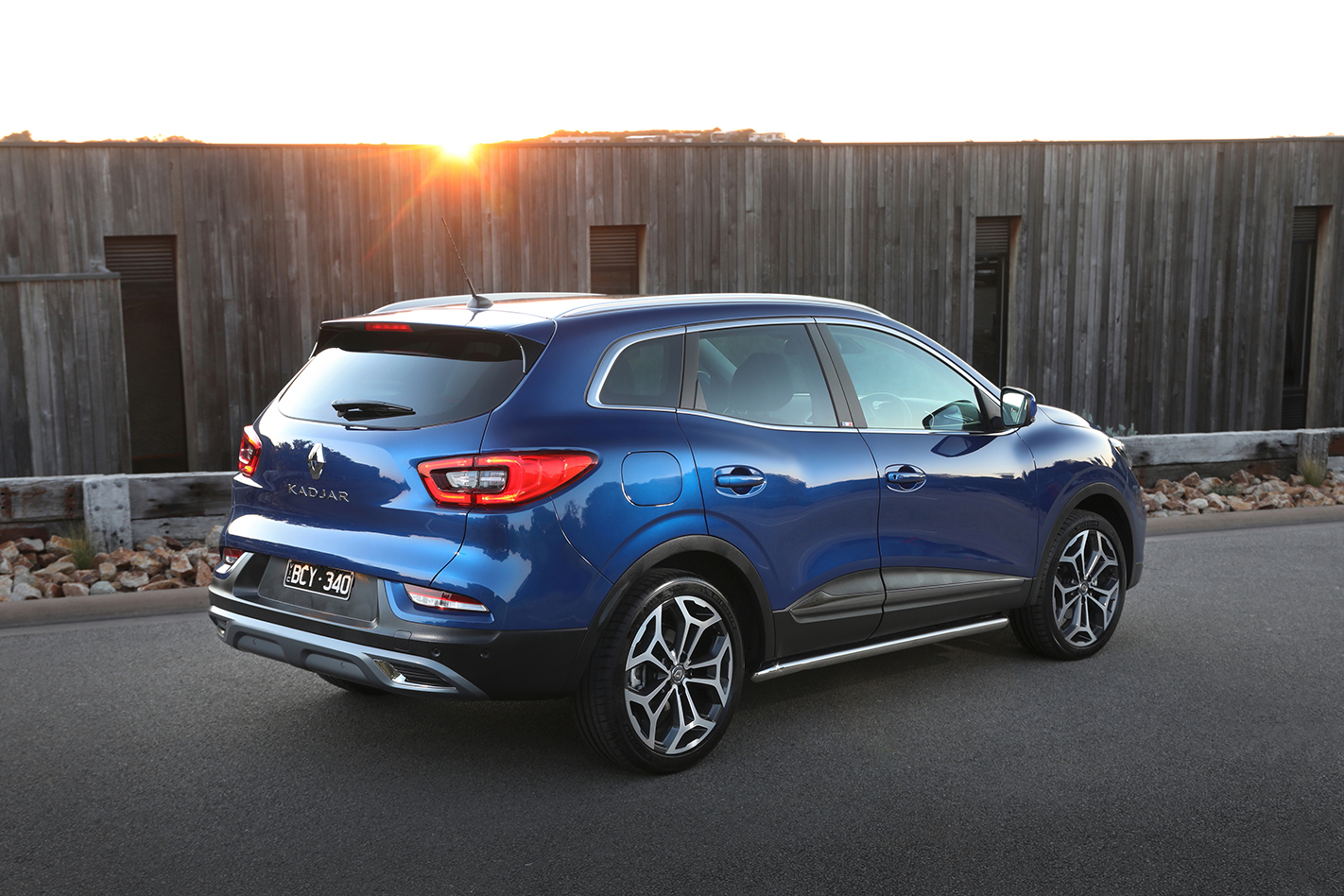
It’s based on the Nissan Qashqai but brings significant differences including a punchy 1.3-litre turbocharged engine sourced from Mercedes-Benz, enhanced infotainment and more sophisticated interior design.
First launched overseas in 2015, it recently underwent a significant update and it’s the new model that arrives in Australia in three spec grades: Life, Zen and Intens, which retail for $29,990, $32,990 and $37,990 respectively before on-road costs.
We’re driving the Intens range topper, which is likely expected to be one of the more popular variants in the Kadjar range alongside the mid-spec Zen.
What’s it like to live with?
The Kadjar is a comfortable and well-equipped small SUV, particularly when you get to the higher-grade Zen and Intens versions.
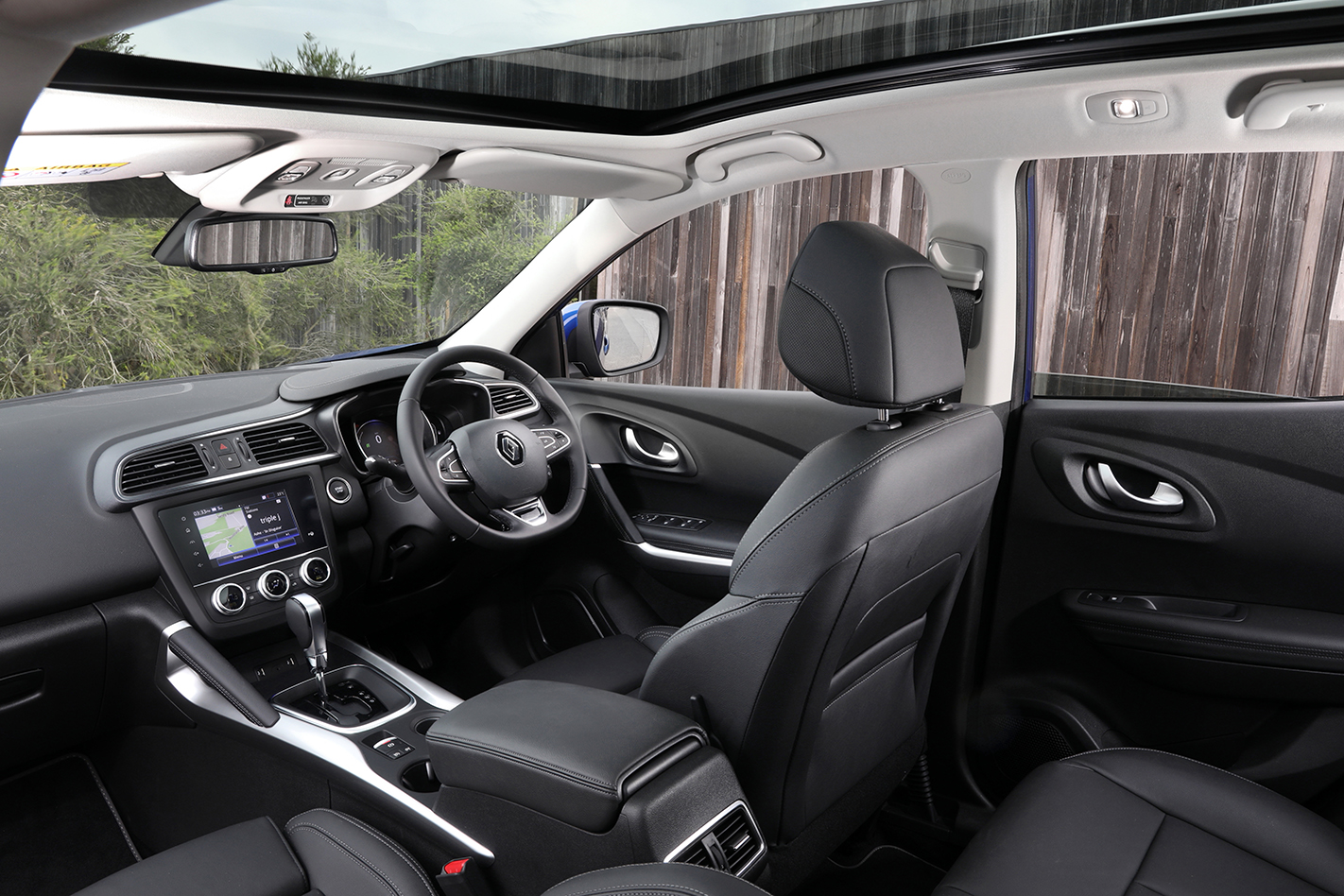
It features a 7.0-inch touchscreen with Renault’s R-Link 2 infotainment system that incorporates in-built satellite navigation and Android Auto/Apple CarPlay phone connectivity. The infotainment menus are easy to follow, but the screen seems a little small by contemporary standards, particularly when trying to view reversing camera images.
Being a Renault, there are audio controls on paddles behind the steering wheel that take a bit of getting used to. Then there’s the mostly unmarked cruise control buttons on the steering wheel, that set or resume, with a separate button on the centre console for switching between speed limiter and cruise control – it’s unorthodox but easier to use than other cruise control systems once you get it.
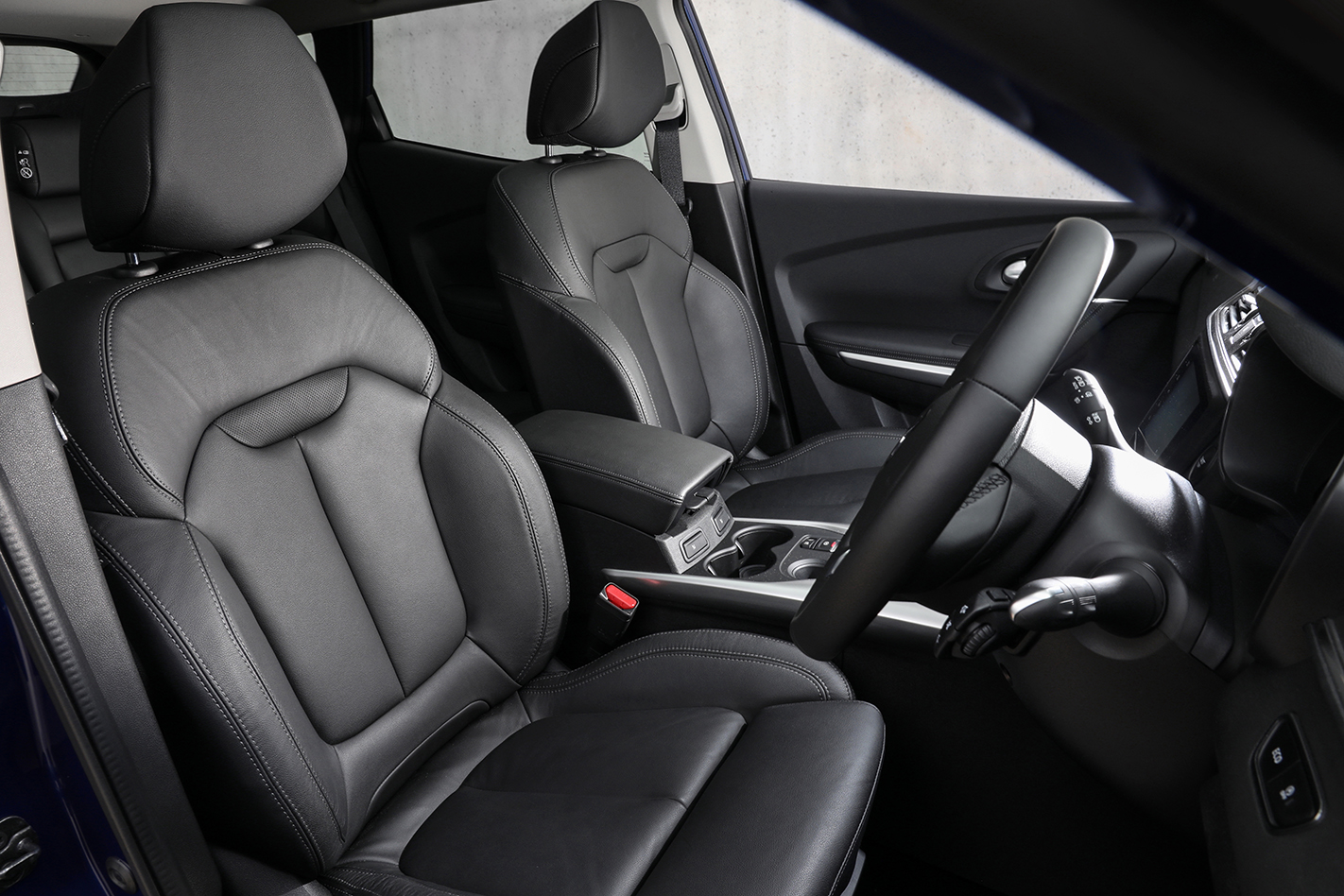
The interior is stylish and European in feel, while the digital gauge display looks sharp and offers a choice of designs and layouts.
The Intens’ leather-appointed front seats are heated and feature deep side and hip bolsters with the bottom cushions extending to provide under-thigh support. The driver’s seat has power adjustment including lumbar support.
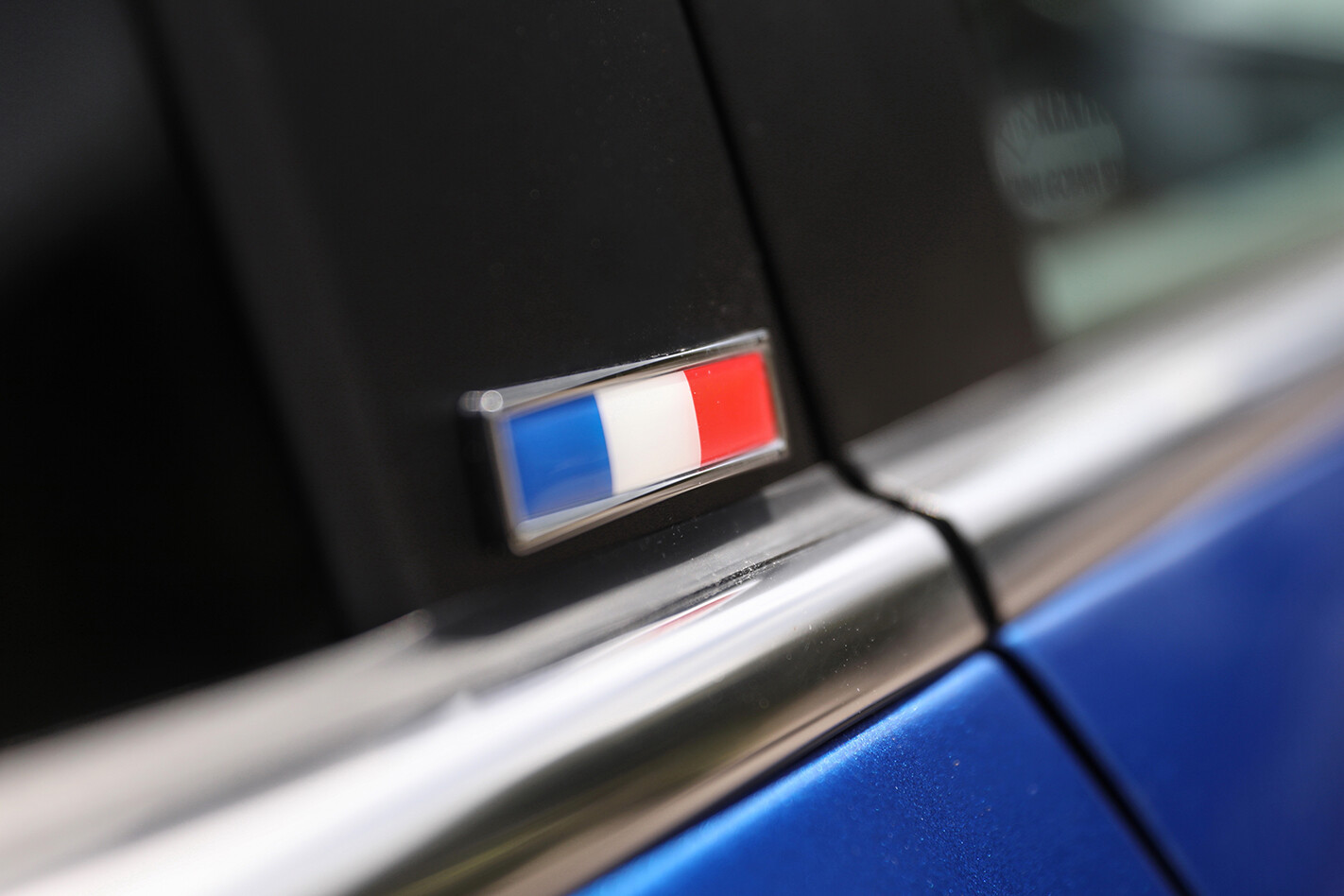
In the second row, seating is also reasonably comfortable, with good leg room and enough space for three adults for shorter trips or two in comfort for longer drives. Three children can be easily accommodated and there are ISOXFIX child-seat mounts for the outer seats.
Rear-seat passengers get their own heating/cooling vents, two USB ports and a 12-volt socket. Storage includes map pockets behind each front seat, door bins that hold 1.5-litre bottles, and two cupholders in the fold-down centre arm rest. Side vision is good despite the rising shoulder line.

The Kadjar has a 408-litre boot space (22 litres smaller than the Qashqai), but the 60:40 split seats can fold down instantly using catches in the boot space to extend cargo carrying capacity to 1478 litres.
On the road, the Kadjar provides a comfortable and smooth ride, though more so in the Life and Zen variants that roll in 17-inch rims. Their chunkier rubber absorbs bumps better than lower-profile tyres on the Intens’ 18s.
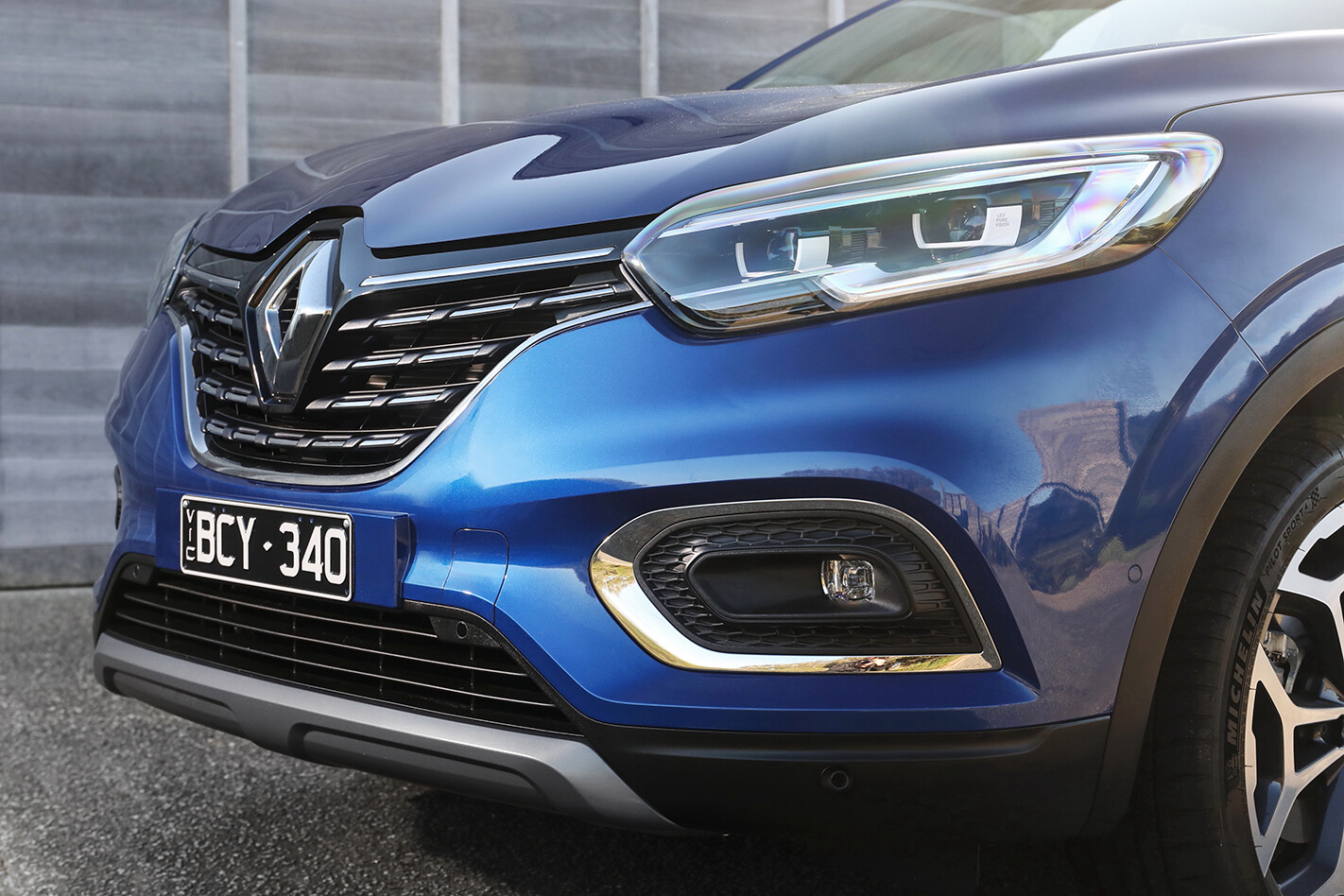
Cabin noise is remarkably low, there’s little wind noise and you only really hear the tyres on coarser surfaces, with the 17-inch rubber a little quieter.
The Kadjar is equipped with autonomous emergency braking, which at this stage doesn’t offer pedestrian or cyclist protection. Other driver assistance features standard to the Intens spec include automatic hands-free parking, blind-spot warning and lane departure warning, rain-sensing wipers, front/rear/side parking sensors, dusk sensing headlights, and fog lights that double as cornering lights.
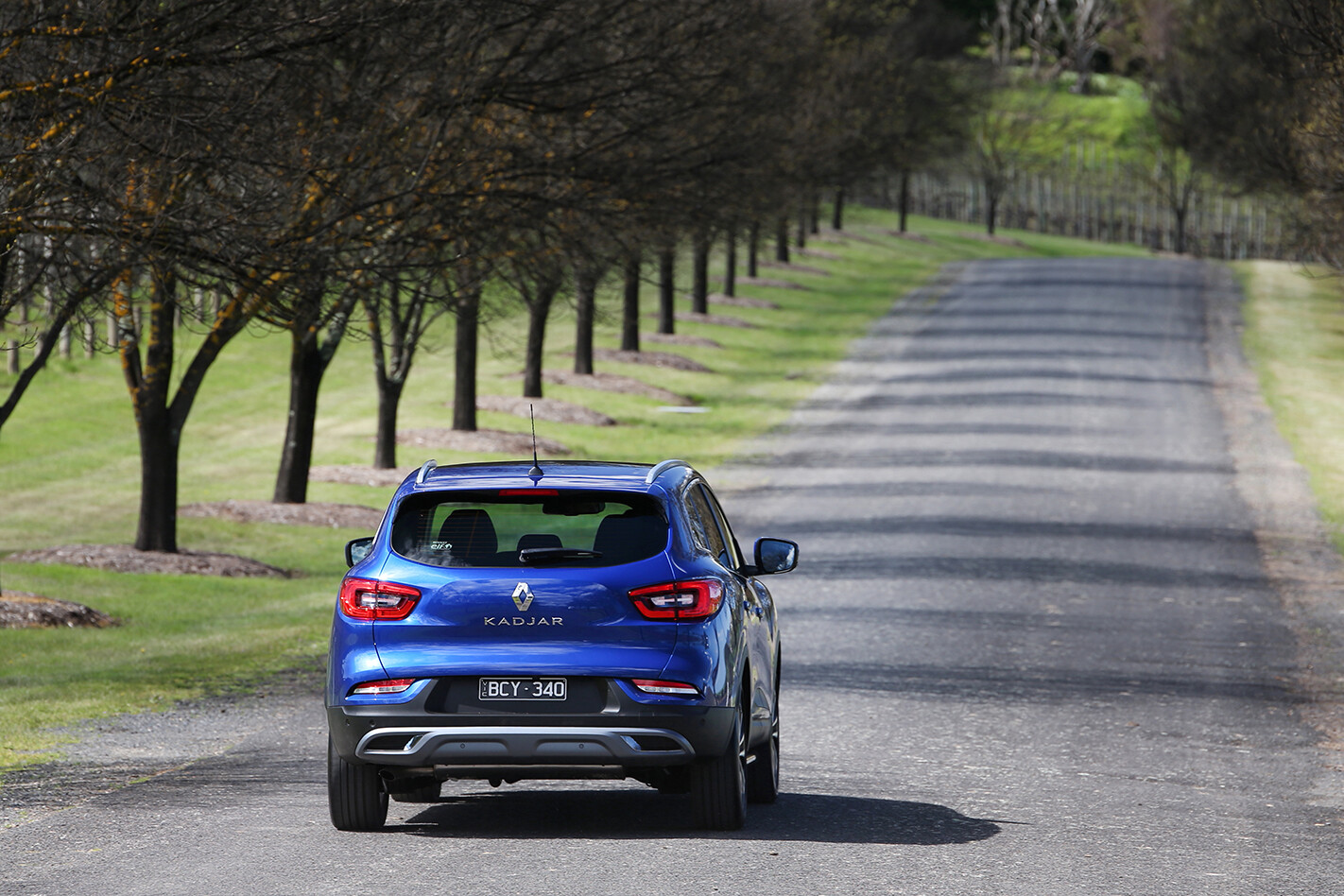
The Intens also comes with a range of desirable premium features including a Bose sound system, ambient lighting, puddle lights, chrome exterior trim, and a huge panoramic sunroof.
The 1.3-litre four cylinder turbocharged petrol engine meets strict Euro6 emissions standards and has a frugal official combined fuel consumption rating of 6.3L/100km, though it does require pricier RON 95 premium unleaded petrol.
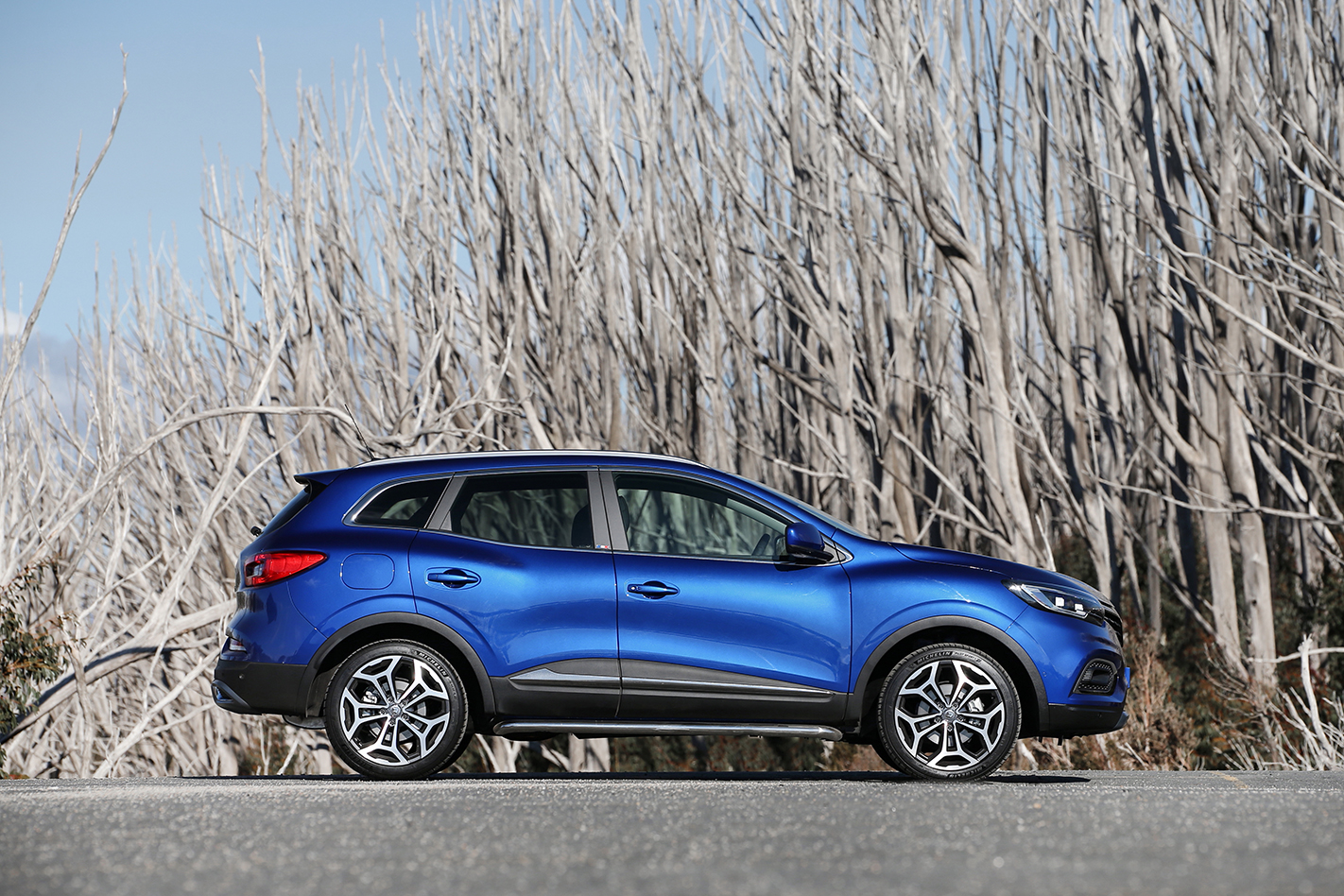
Each Kadjar variant is covered by a five-year, unlimited-kilometre warranty, with five-year capped price servicing and free roadside assistance available.
What’s it like to drive?
The name Kadjar loosely translates to ‘agility on four wheels’ which is a fair description of Renault’s small SUV.
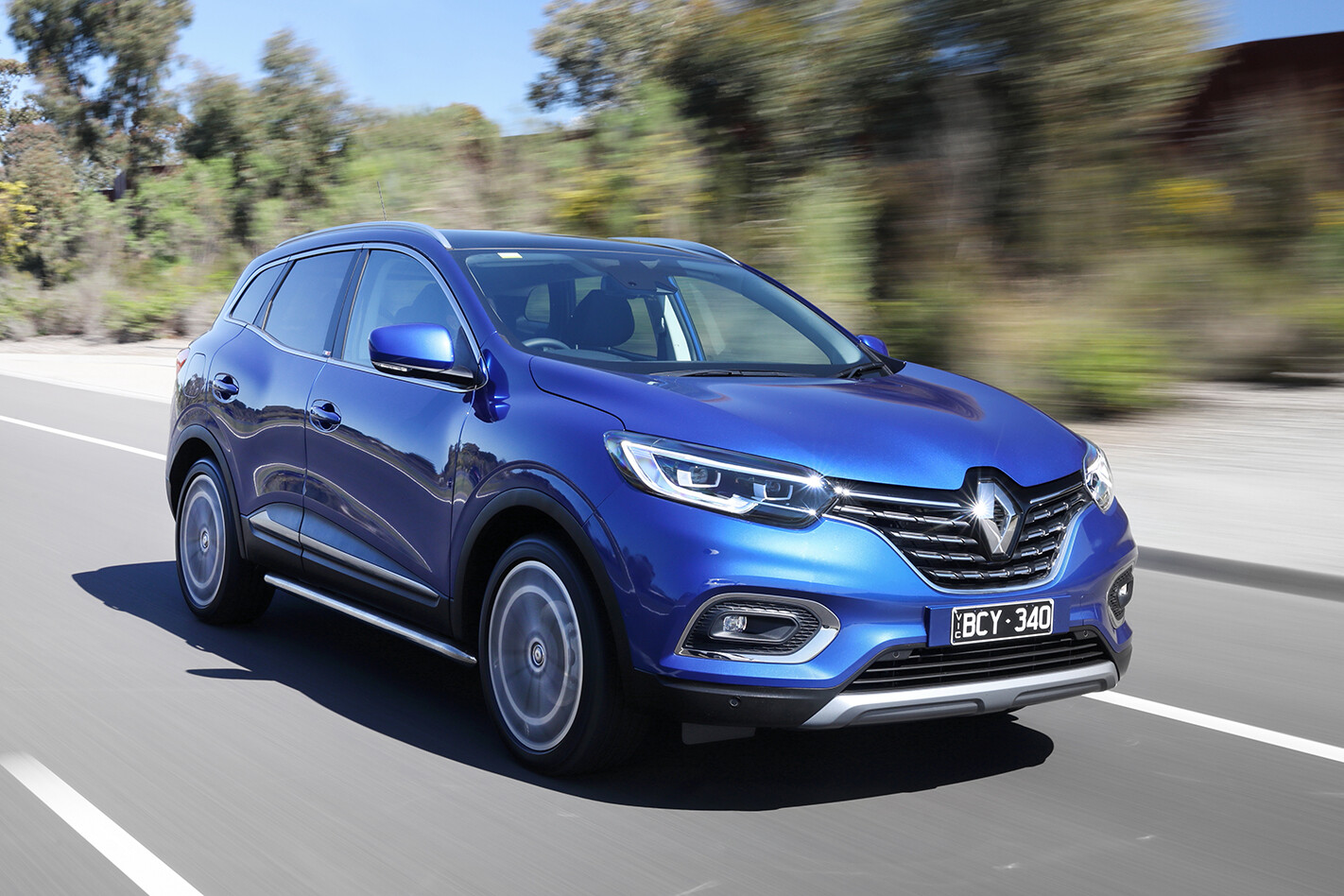
Like the Qashqai, it’s enjoyable to drive, with the 117kW/260Nm 1.3 litre turbo giving the French car (that’s built in Spain with a German engine and Japanese chassis) some added zip.
The engine is similar to the one found under the bonnet of Mercedes-Benz A200, but with a slightly different tune. As in the Benz hatch, it’s coupled to a seven-speed dual-clutch automatic transmission, though this is a Renault gearbox that’s also found in the Alpine A110. One of the issues with the A200 however, is a considerable lag when you put your foot down – you don’t get that in the Kadjar.
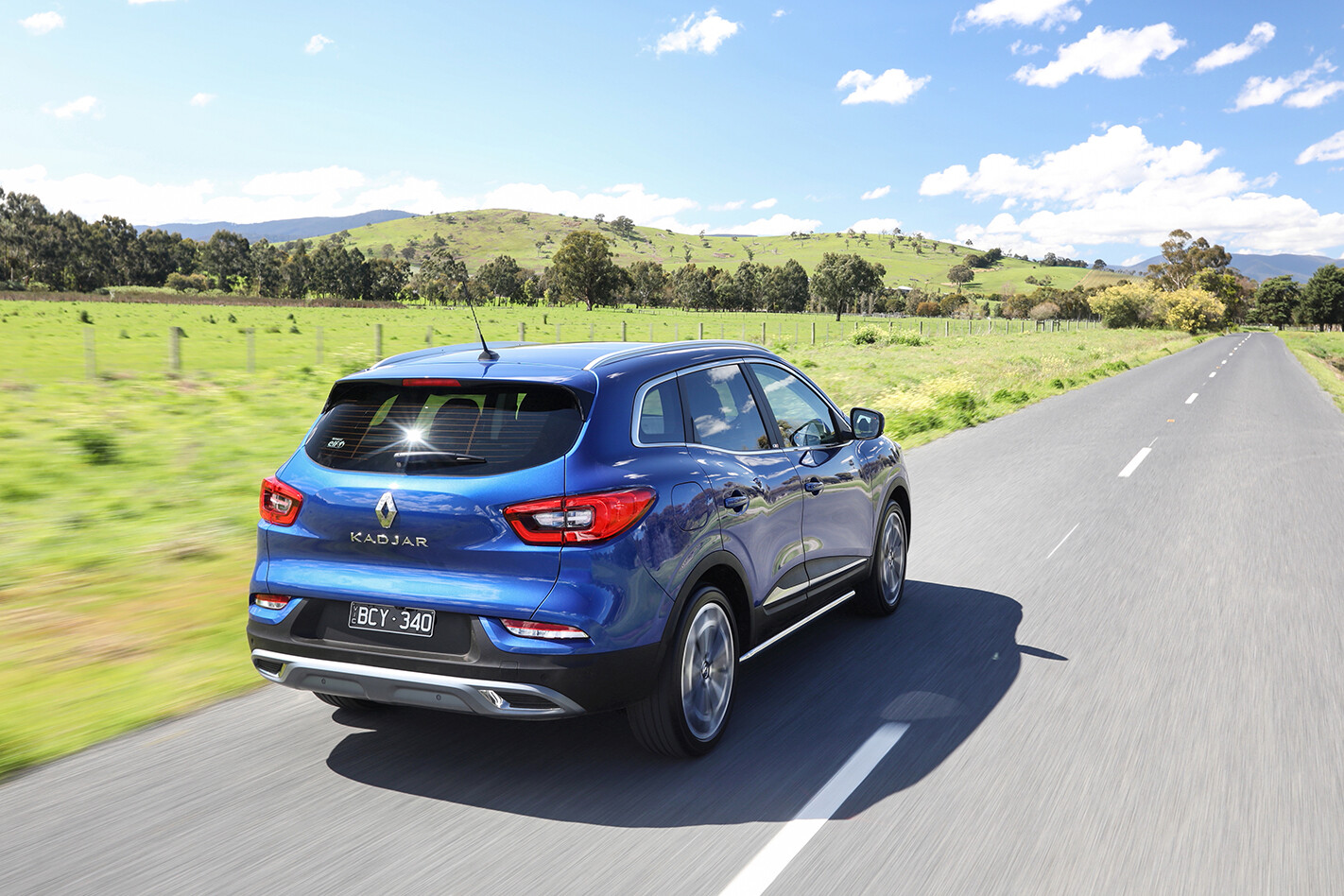
The front-wheel-drive Kadjar accelerates from zero to 100km/h in a relatively tame 9.6 seconds, which is about half a second quicker than the 2.0-litre Qashqai. It’s very good with stop-and-go city driving, which isn’t always the case with dual-clutch shifters, and it feels quite eager once you get beyond 60km/h.
The comfortable ride is unruffled by country roads including gravel, but the handling loses composure on bends with noticeable body roll and light steering that feels disconnected from the front wheels.
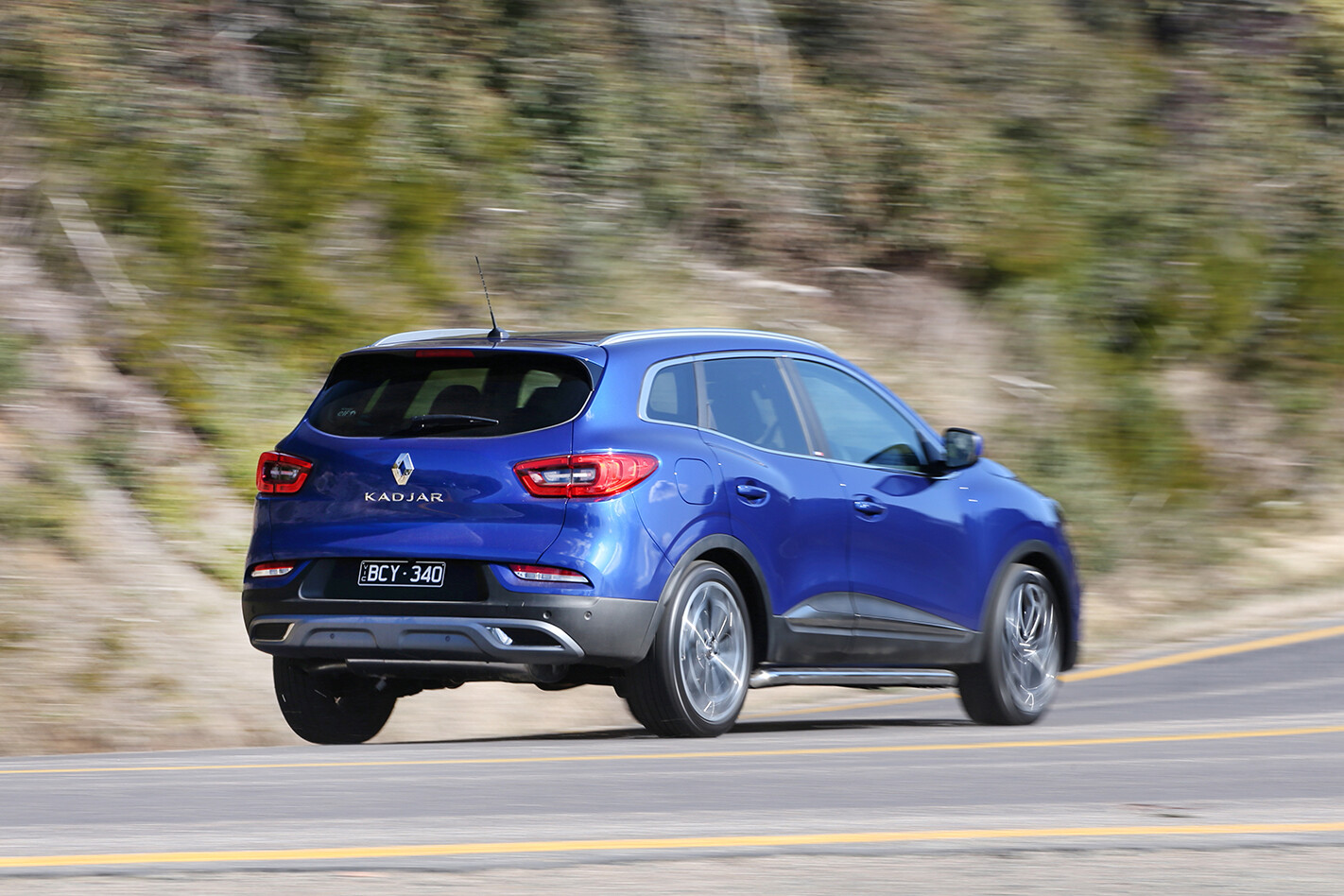
Unusually, this is more pronounced with the Intens’ 18-inch wheels, while the 17-inch deeper tyre walls provide a little more feeling through the tiller.
That said the steering is fast and light, and comes into its own about town, which helps make the Kadjar very easy to park, negotiate tight spots and live up to its name.
Is it worth it?
If you’re after something a little different and with European styling and premium features to suit, the Intens sub-$40k retail price represents a bit of a bargain that compares well to similarly equipped Japanese and Korean rivals.

However, the mid-spec Zen is the pick of the Kadjar range. Its $3000 premium over the entry-level Life is great value for the additional comfort and safety features it brings.
The $5000 you’ll save by not opting for the Intens means you’ll miss out on some attractive features, but will retain the important safety kit and gain slightly better ride and handling. And if you really want the glass roof, you can have it along with an auto-dimming mirror as a $1000 option.
Things we like
- Smooth ride
- Premium features
- Spacious interior
Not so much
- Loose road holding
- Small touchscreen display




